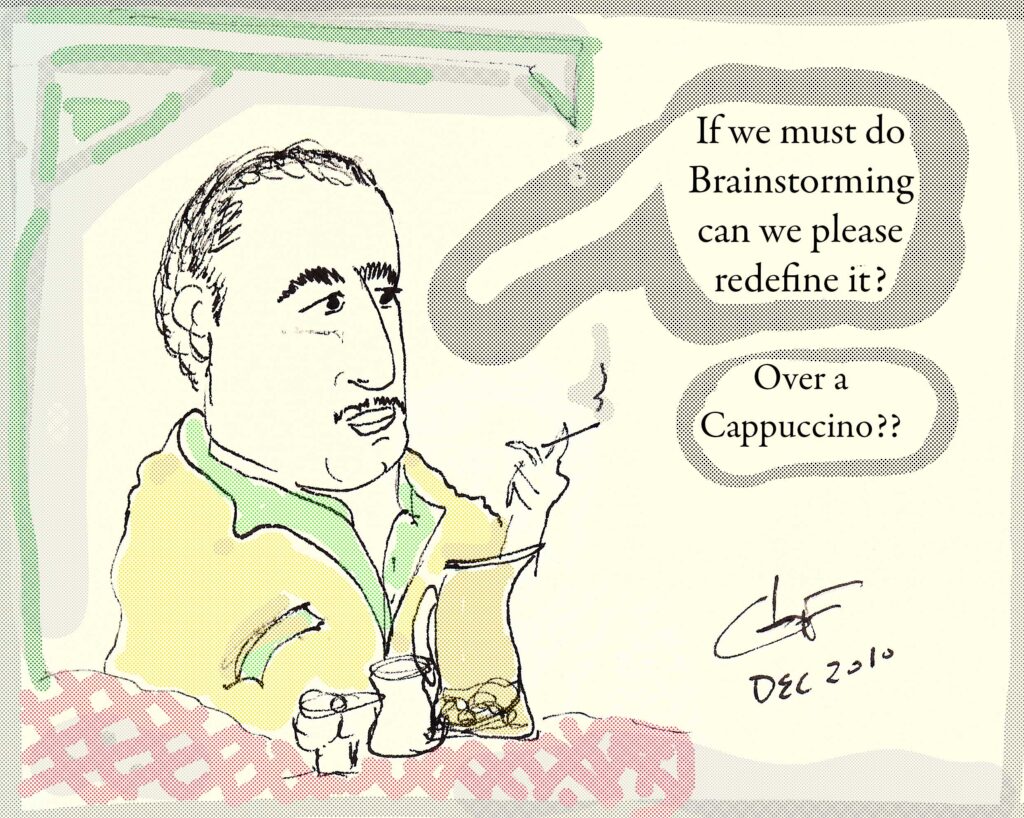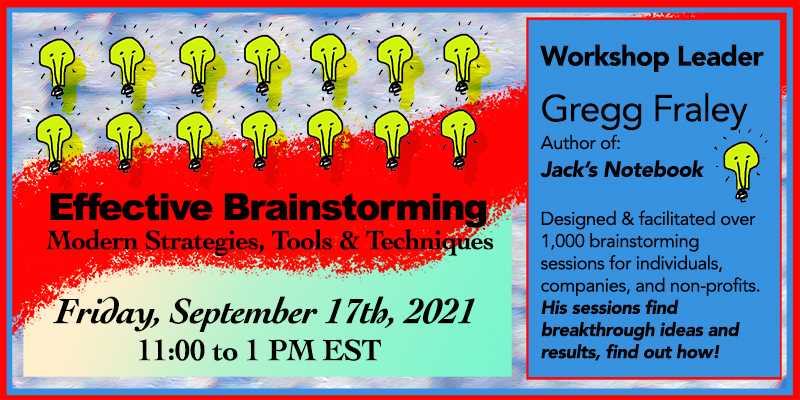The Sins That Ruin Idea Generation
Redefine Brainstorming If You Want Results

It’s okay to hate Brainstorming.
I’ve heard it called BrainWasting, BullStorming, BullShifting, or words I won’t use here. Perhaps the most damning comment is simply “why did we bother?” Well, you bother because you need ideas. I can get you there, see below.
But first…
There have been many studies of brainstorming and articles written. Most (but not all) say it’s a waste of time. Many of these studies start with an outdated notion of what brainstorming is, and usually don’t study real working teams. How you define it (and conduct it) makes a difference. As a person whose facilitated over 1,000 sessions I can tell you this: it can work fabulously, but it’s a tricky recipe for success.
We’ve all been in a poorly organized spitball session. It feels energetic for a brief time, then, it devolves into a discussion, boredom, arguments, and ultimately little action. The original guidelines of brainstorming (defer judgment, quantity of ideas, build on ideas, combine, etc.) are ignored.
Some folks tune out immediately; it’s been measured, it’s called Social Loafing. And, introverts tend to really hate brainstorming because of all the noise, chaos, and people talking over each other. Remember, half of any group is likely to be somewhat introverted. They tune out if care isn’t taken to include them.
Rarely does a casual brainstorm generate a breakthrough idea. And, if a good idea doesn’t become a project, some actual real world action, what’s the point?
But while you’re hating Brainstorming, how exactly are you coming up with the ideas you need? Everybody, and organizations, need ideas to solve problems. So hate all you want, but maybe it’s time to revisit, redefine, and do a better job of how you generate ideas.
Maybe it’s time to avoid committing brainstorming sins.
Let me get to the point here. If you want results you have to do brainstorming differently. Yes, we have to redefine and broaden the concept. Here are the keys to doing that, and making it work in the real world. Here are the 10 Commandments of Effective Brainstorming
- Don’t start unless you give a damn and are empowered to take action
- Make sure you’re answering the right question before jamming ideas
- Explore the topic area extensively before jamming ideas
- Work as individuals first, AND, then work as a team
- Work virtually AND in-person, when possible
- The more diverse the team, in every sense of the word, the better
- Stretch the idea generation work out over a week or more
- A neutral and skilled facilitator improves process and results
- The session should include a variety of brainstorming tools (see #8)
- Design of the session should include introvert-friendly tools (see #9)
There is a great deal to say about the 10 Commandments listed above. Collaboration to solve problems is all about culture, incentives, team building, leadership, and more. I could write a book on problem framing, #2, alone. Stay tuned to this blog for more, and, consider one of my virtual training sessions (Effective Brainstorming is coming up on 9/17/2021, via Eventbrite).



